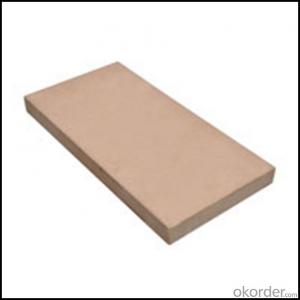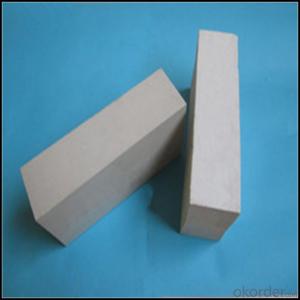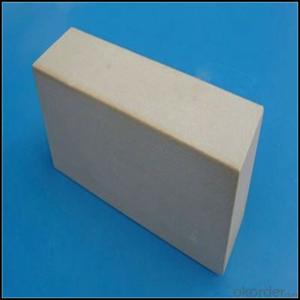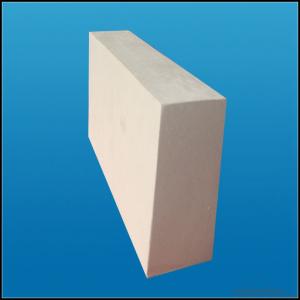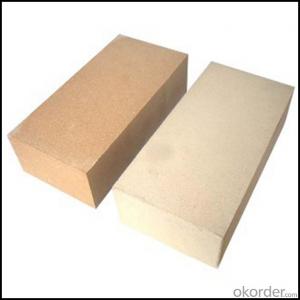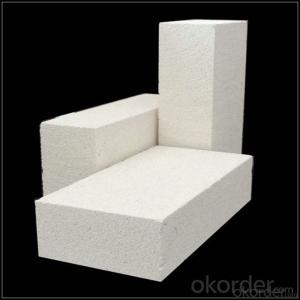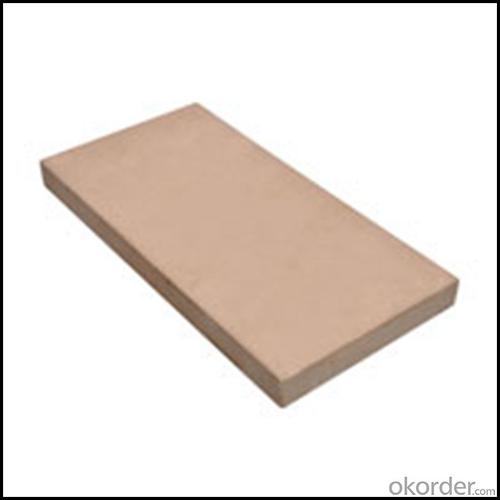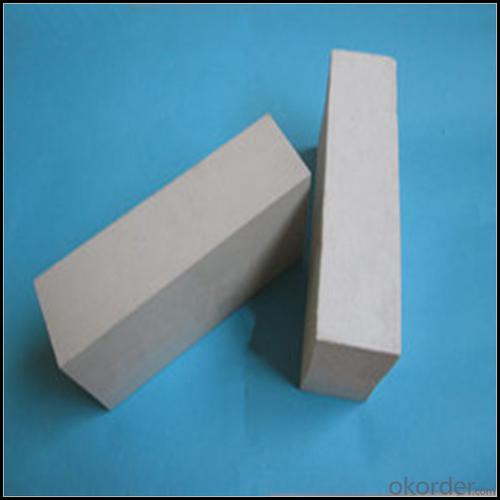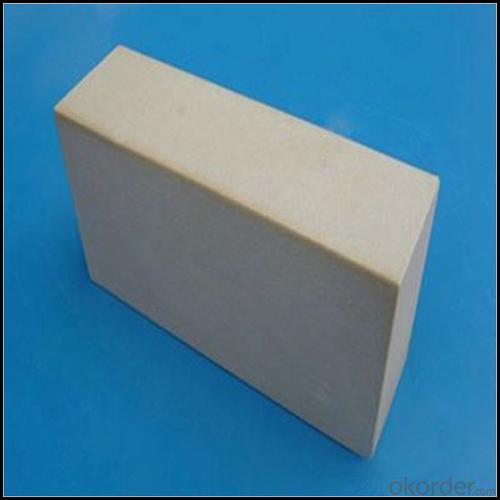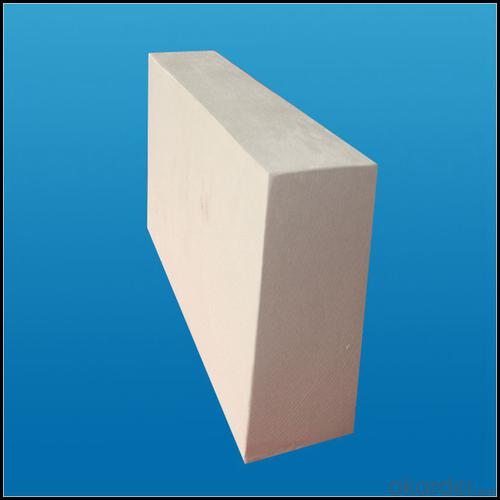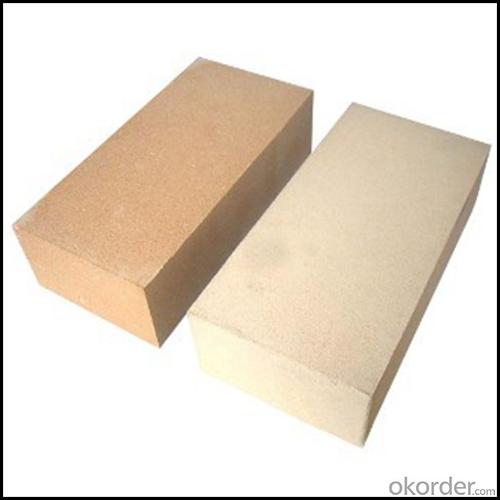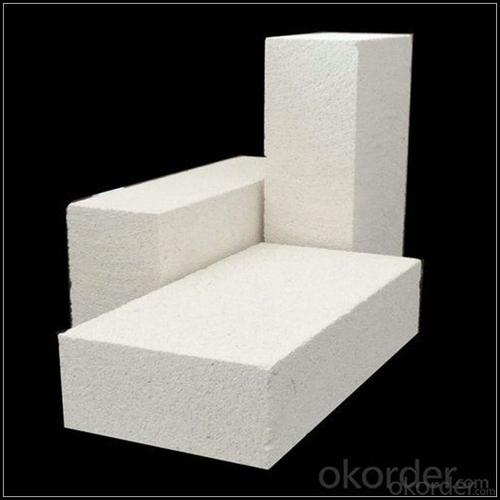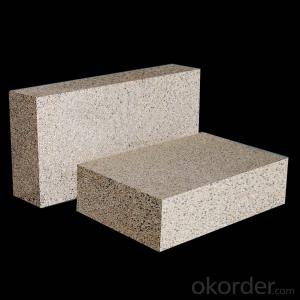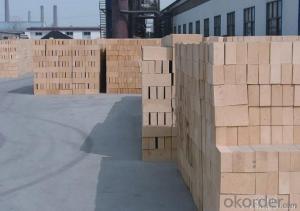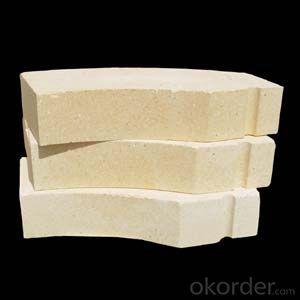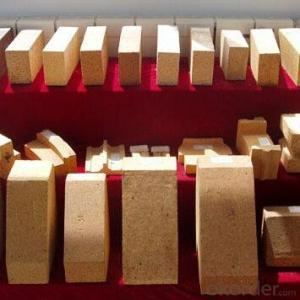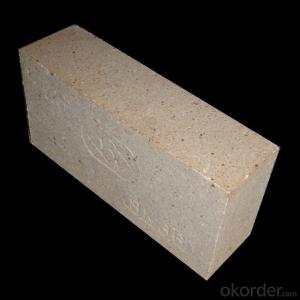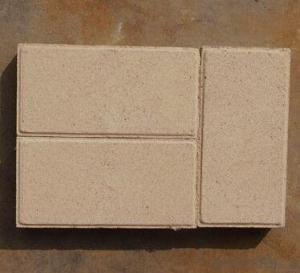High Alumina Insulating Fire Bricks - Fireclay Refractory Bricks
- Loading Port:
- China main port
- Payment Terms:
- TT OR LC
- Min Order Qty:
- 1 m.t
- Supply Capability:
- 2500 m.t/month
OKorder Service Pledge
OKorder Financial Service
You Might Also Like
Acid Resistant Brick
CMAX firebricks are classified under temperature between 1300℃ to 1700℃, manufactured from high purity alumina clay.
High alumina refractory brick is dense shaped refractory material. With high refractoriness and mechanical behavior under high temperature, refractory brick is the necessary material of high-temperature services, mainly used for industrial furnaces and kilns and thermal equipment.
High alumina refractory brick has wide applications, mainly used in metallurgy, construction(cement and glass), petroleum, chemical industry, electric power and machine building.
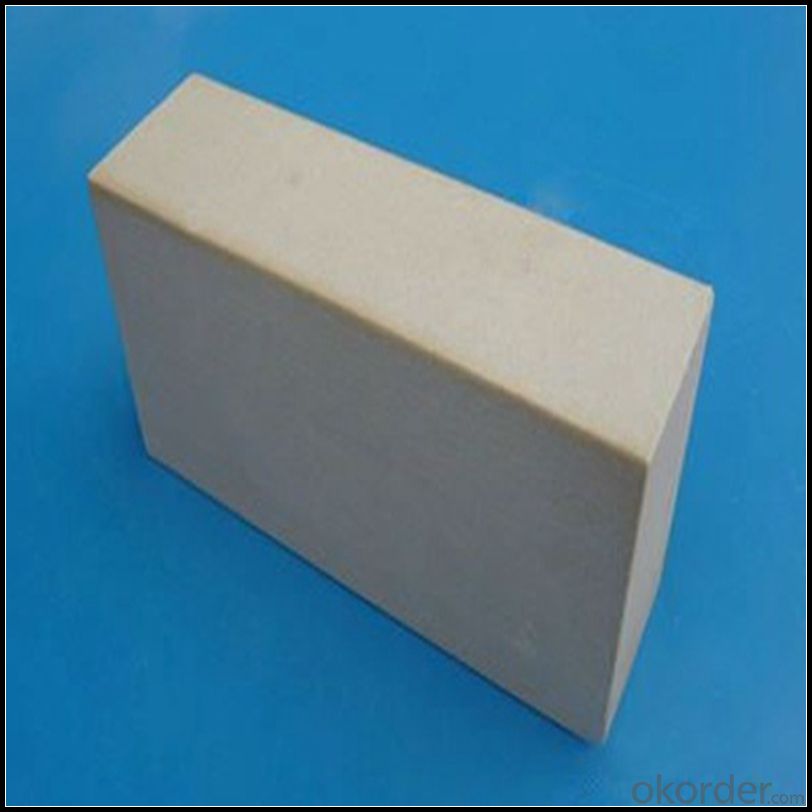
Features
Certificate of Quality for each parcel
Raw material from China, Australia and Germany
Good price
Many sizes in stock ; Making tiles accroding to your drawings
Resistance: Excellent
Quick delivery& Professional service
Excellent thermal stability
High refractoriness under load
Excellent thermal shock resistance
High refractoriness
High strength
Low thermal conductivity
Slag resistance to acid and alkaline slag erosion
Application
Data Sheet
Classification Temperature (℉/℃) | 3000/1650 |
Bulk Density (g/cm3 ) | ≤1.0 |
Thermal Conductivity | |
800℃, W/m.K | ≤0.39 |
1000℃, W/m.K | ≤0.43 |
1200℃, W/m.K | ≤0.48 |
Reheating Linear Change (%) | 1550℃×12h |
≤0.9 | |
Chemical Composition (%) | |
Al2O3 | ≥75 |
Fe2O3 | ≤0.5 |
Packaging & Shipping
Packaging Details:Be packed in fumigated wooden pallets
Delivery Detail: 30 days after order

Our Services
Optimum solution and product supply of refractories for high temperature industries, such as iron steel, non-ferrous, petrochemical and building materials.
Engineering design, contract and consult for refractories, and civil architecture design.
Research, development, manufacture and sale of superhard materials.
R&D, manufacture and sale of special packing materials for export.
Inspection, supervision and arbitration of refractories.
Consultation and services in refractories information.
Training and cultivation of high-level talents in refractories profession
Sales Network

Company Information
CNBM (China National Building Material) Group is the largest comprehensive building materials group in China that in integrate scientific research, manufacturing and logistics into one entity. The largest building materials and equipment specialists in China. Upon State Council approval, today CNBM owned more than 300 subordinate manufacturing factories and servicing companies. There are 6 fully owned public listed companies and 11 partially owned with substantial shares public listed companies. In many of these fields, CNBM is playing the leading role in the building industry in the country.
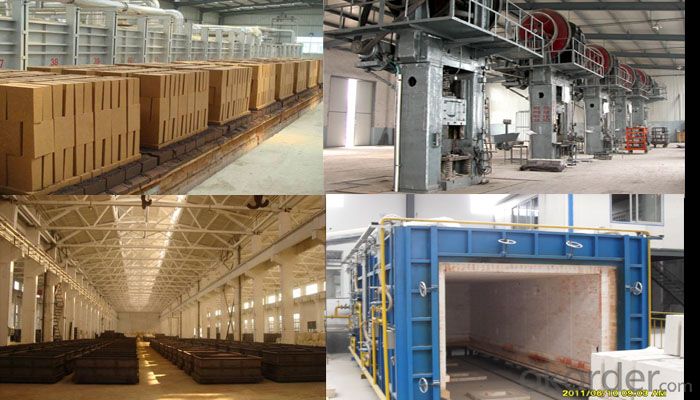
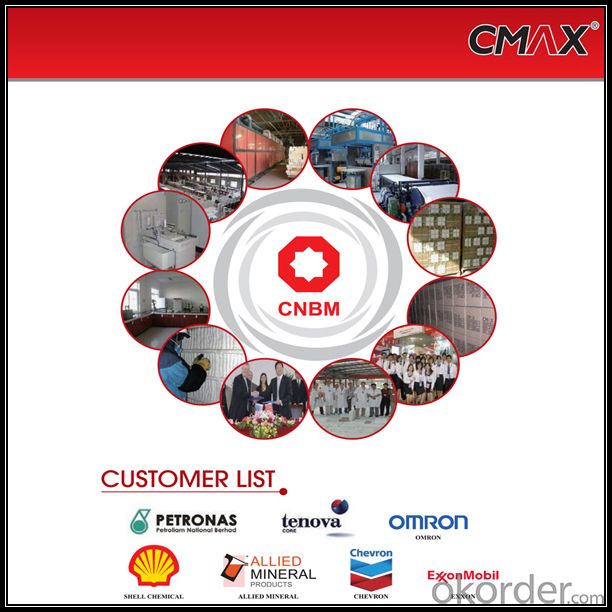
FAQ
1. Which products do you have?
We have all kinds of refractory brick, castable, mortar, cement, ceramic fiber products, etc.
Or you could browse our products to choose what you need.
2. Can you give me a brief introduction of the application of your products?
We are mainly specializing in the refractory materials in iron and steel, cement, glass, ceramics, petrochemical, electric power Industry, etc.
3. If I need your offer, what information do you need?
In order to choose suitable products, it will be appreciated to provide us the information, such us specification, technical data, order quantity, products application etc. If any question, please contact us freely.
- Q: Can insulating fire bricks be used for insulation in incinerators?
- Yes, insulating fire bricks can be used for insulation in incinerators. Insulating fire bricks are made from lightweight refractory materials and have high insulating properties, making them ideal for applications that require heat containment and energy efficiency, such as incinerators. These bricks have low thermal conductivity, which means they can effectively trap and retain heat within the incinerator, preventing it from escaping and improving the overall efficiency of the incineration process. Additionally, insulating fire bricks are resistant to high temperatures and can withstand the harsh conditions typically found in incinerators, making them a reliable choice for insulation purposes.
- Q: Can insulating fire bricks be used in boilers for steam generation?
- Boilers can utilize insulating fire bricks for steam generation. These bricks are composed of lightweight materials, such as ceramic fibers or expanded clay, that possess exceptional insulation properties. Their low thermal conductivity ensures effective heat transfer prevention. The insulation within boilers is crucial for minimizing heat loss and enhancing energy efficiency. Insulating fire bricks can be utilized to line the boiler combustion chamber's walls, roof, and floor. By creating a highly insulating barrier, they retain heat within the chamber, enabling more efficient steam generation. Additionally, insulating fire bricks possess the ability to withstand high temperatures, making them suitable for boilers that involve elevated temperature steam generation. They also exhibit resistance to thermal shock, which is significant in scenarios where temperature fluctuations can arise. In conclusion, insulating fire bricks offer considerable advantages for boiler applications. They provide exceptional insulation, can endure high temperatures, and contribute to enhanced energy efficiency in steam generation.
- Q: Are insulating fire bricks resistant to carbon monoxide attack?
- Yes, insulating fire bricks are resistant to carbon monoxide attack. These bricks are designed to withstand high temperatures and are made from materials that have low thermal conductivity. This makes them highly resistant to chemical reactions, including carbon monoxide attack.
- Q: Can insulating fire bricks be used in the construction of smelting ovens?
- Indeed, the utilization of insulating fire bricks in the construction of smelting ovens is indeed possible. These fire bricks are specifically engineered to possess a low thermal conductivity, enabling them to effectively retain heat. This particular characteristic renders them particularly well-suited for applications requiring the consistent maintenance of high temperatures, such as smelting ovens. Smelting ovens serve the purpose of melting and refining various metals and minerals. These procedures entail the utilization of exceedingly high temperatures, making it crucial to minimize heat dissipation in order to ensure efficient and effective smelting. By providing exceptional insulation and reducing heat dissipation, insulating fire bricks can contribute to the achievement of this objective. Insulating fire bricks are manufactured using lightweight materials, including ceramic fibers or expanded clay, which are renowned for their superior insulating properties. These fire bricks are capable of withstanding temperatures of up to 3000°F (1650°C), rendering them suitable for the intense heat generated within smelting ovens. Moreover, insulating fire bricks demonstrate resistance against thermal shock, enabling them to endure rapid temperature fluctuations without suffering from cracks or breakages. This quality is of utmost importance in smelting processes, which frequently involve cycles of heating and cooling. Furthermore, insulating fire bricks are highly malleable and can be easily cut or shaped to accommodate specific dimensions or designs. This inherent flexibility renders them highly adaptable for the construction of smelting ovens of varying shapes and sizes. To summarize, the implementation of insulating fire bricks in the construction of smelting ovens is an exceptional choice due to their low thermal conductivity, high resistance to extreme temperatures, ability to withstand thermal shock, and ease of customization. These fire bricks effectively maintain high temperatures, minimize heat dissipation, and ensure the efficiency of smelting processes.
- Q: Can insulating fire bricks be used in the construction of foundry furnaces?
- Yes, insulating fire bricks can be used in the construction of foundry furnaces. Insulating fire bricks are made from lightweight materials that have high insulating properties, such as ceramic fibers, vermiculite, or perlite. These bricks are designed to withstand high temperatures, making them suitable for use in foundry furnaces. Foundry furnaces require materials that can withstand the extreme heat generated during the melting of metals. Insulating fire bricks have a high resistance to heat transfer, which helps to minimize heat loss in the furnace. This makes them an excellent choice for insulating the walls and floor of the furnace, as they can help to improve energy efficiency and reduce fuel consumption. Additionally, insulating fire bricks are lightweight, which makes them easier to handle and install in the construction of the furnace. Their lightweight nature also reduces the overall weight of the furnace structure, making it more portable and easier to move if needed. Overall, insulating fire bricks are a suitable choice for the construction of foundry furnaces due to their high insulating properties, resistance to heat, and lightweight nature. They can help improve the efficiency and performance of the furnace while withstanding the extreme temperatures required for metal melting.
- Q: Do insulating fire bricks require any special sealing or caulking?
- Yes, insulating fire bricks typically require special sealing or caulking in certain applications. While insulating fire bricks are designed to withstand high temperatures and provide excellent thermal insulation, they can still be susceptible to moisture infiltration and atmospheric gases in specific environments. To mitigate these risks, sealing or caulking is often necessary. Sealing or caulking insulating fire bricks involves using specialized refractory materials or compounds that are resistant to high temperatures and can create an airtight barrier. The sealing process helps to prevent the ingress of moisture, gases, or other contaminants that could compromise the insulating properties of the bricks. The specific sealing or caulking method will depend on the application and the type of insulating fire bricks being used. Some common sealing techniques include using high-temperature silicone sealants, refractory mortars, or coatings. These materials are specifically formulated to withstand the extreme temperatures experienced in high-heat environments. It is important to consult the manufacturer's guidelines or seek professional advice when determining the appropriate sealing or caulking method for insulating fire bricks. Proper sealing ensures the longevity and effectiveness of the insulation, as well as the overall performance and safety of the application.
- Q: Do insulating fire bricks require any special anchors or supports for installation?
- Yes, insulating fire bricks do require special anchors or supports for installation in certain applications. Insulating fire bricks are lightweight and have low thermal conductivity, making them ideal for use in high-temperature environments such as furnaces, kilns, and fireplaces. However, due to their lightweight nature, they can be prone to movement or displacement under certain conditions. To ensure the stability and integrity of the insulating fire bricks, it is recommended to use special anchors or supports during installation. These anchors or supports are typically made of metal, such as stainless steel, and are designed to securely hold the bricks in place. They help prevent the bricks from shifting or falling out, especially when exposed to vibrations, thermal expansion/contraction, or other external forces. The type and design of the anchors or supports depend on the specific application and installation requirements. Common types of anchors include V anchors, U anchors, and L anchors, which are embedded into the surrounding refractory material or attached to a structural frame. The anchors or supports should be properly spaced and installed according to the manufacturer's guidelines to ensure adequate support and stability of the insulating fire bricks. In summary, while insulating fire bricks offer excellent thermal insulation properties, they do require special anchors or supports for installation in order to prevent movement or displacement. These anchors or supports play a crucial role in maintaining the structural integrity and longevity of the insulating fire brick system.
- Q: Can insulating fire bricks be used in the construction of smelting furnaces?
- Smelting furnaces can indeed utilize insulating fire bricks in their construction. These bricks have been specifically crafted to endure extreme temperatures and offer exceptional insulation, rendering them an impeccable choice for smelting furnaces. Their low thermal conductivity aids in minimizing heat dissipation and upholding a steady temperature within the furnace. Moreover, these bricks are lightweight, which facilitates their handling and installation. All in all, incorporating insulating fire bricks in the construction of smelting furnaces can enhance energy efficiency, diminish operational expenses, and elevate the overall furnace performance.
- Q: If there is a main component of cenosphere light insulating brick.
- Light heat insulation brick with cenosphere composition, material properties will be more high, especially the main properties of thermal conductivity
- Q: Do insulating fire bricks have a low thermal conductivity?
- Yes, insulating fire bricks have a low thermal conductivity.
Send your message to us
High Alumina Insulating Fire Bricks - Fireclay Refractory Bricks
- Loading Port:
- China main port
- Payment Terms:
- TT OR LC
- Min Order Qty:
- 1 m.t
- Supply Capability:
- 2500 m.t/month
OKorder Service Pledge
OKorder Financial Service
Similar products
Hot products
Hot Searches
Related keywords
